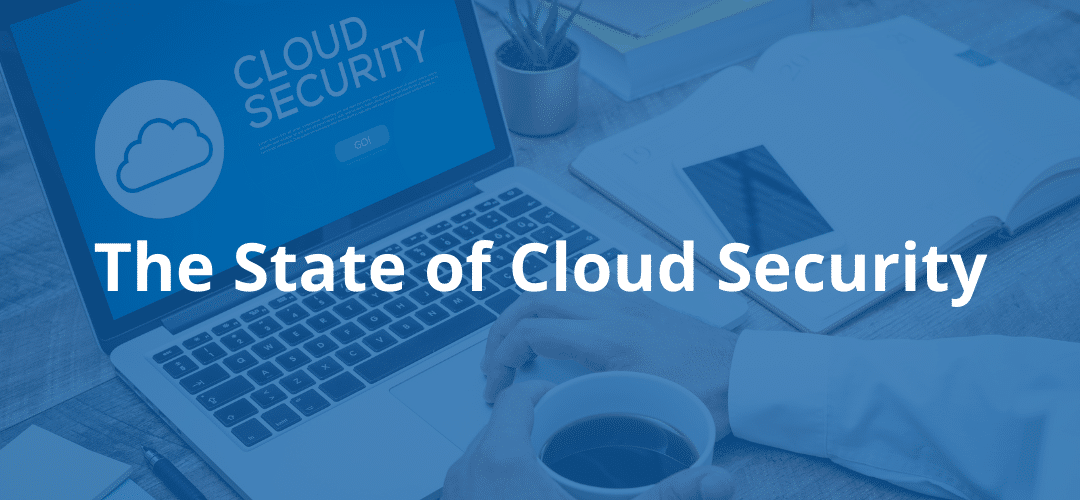
The business world is almost entirely reliant on cloud computing, with 99 percent of organizations using at least one cloud in 2021, according to Flexera. This phenomenon has only accelerated over the past year. Cloud computing guided businesses through the pandemic by creating access solutions for remote work. For organizations in every industry, the cloud is now ubiquitous, and therefore security is paramount.
Cloud Security Challenges
Flexera reported that 81 percent of organizations using the cloud report security as a main challenge. One of the most serious mistakes an organization can make when it comes to cloud security is assuming that security is entirely handled in the cloud. You can delegate everything except for accountability, and knowing who is responsible for handling each security measure is critical.
According to the Cloud Security Alliance (CSA), the top threats to cloud computing are:
- Data Breaches
- Misconfiguration and Inadequate Change Control
- Lack of Cloud Security Architecture and Strategy
- Insufficient Identity, Credential, Access and Key Management
- Account Hijacking
- Insider Threat
- Insecure Interfaces and APIs
- Weak Control Plane
- Metastructure and Applistructure Failures
- Limited Cloud Usage Visibility
- Abuse and Nefarious Use of Cloud Services
By understanding the most common threats to look for, you can work to ensure all of your organization’s bases are covered. While the threats listed above are considered most common, the most menacing hazard often gets overlooked—human error. There’s a major shortage of skills and resources in the cybersecurity industry, specifically those with cloud skill sets, which makes organizations all the more vulnerable to those common security threats.
Cloud Security Tools
Luckily, there are a number of key cybersecurity tools available to ensure the security of your cloud. Over the past year with the shift to remote work, there have been plenty of innovations designed to make it easier for end users to be protected, no matter where they are. Offer built-in features within your products to make it easier for end users to control their data, empowering them to make smart security choices on their own. Some recommendations for improving your cloud security include:
- Visibility, visibility, visibility.
Use tools that will increase visibility into your environment. When you have greater visibility into your environment, you can detect and address potential security threats, like unauthenticated logins or unpatched vulnerabilities.
- Use a cloud aspect security broker (CASB).
A CASB is a broker between the cloud service provider and the user. In addition to addressing any gaps in security, it can monitor and enforce security policies.
- Implement zero-trust identity management.
A zero-trust identity management model, as the name suggests, operates under the assumption that all network traffic is untrustworthy. As such, every user, device, and network must be verified. Zero-trust is a highly effective strategy for organizations to control access.
- Look at the native tools of the cloud you’re using as a playbook.
There’s no need to reinvent the wheel. Whether you’re using AWS, Azure, or another cloud service provider, utilize the security tools that are available in their native environment.
- Use multi-cloud security.
Most organizations have adopted a multi-cloud strategy. Multi-cloud strategy builds architectural resiliency, but it also involves exchanging information between clouds, so it’s critical to understand what the attack surface looks like. A CASB is a great tool for managing multi-cloud security.
When building on AWS or in a multi-cloud environment, it’s important to architect your cloud to be stable. Mutable infrastructure allows you to build your cloud in a way that can be rebuilt every day.
For an organization choosing a cloud solution, ensure that the solution has documentation available on how to use their cloud in a secure manner. It’s a good sign if the cloud solution uses security to empower users to take care of their data.
A Global Approach
There are different ways to approach cybersecurity by industry and location. The value of data differs by industry. According to the 2020 IBM security report, healthcare data breaches cost significantly more than breaches in other industries, such as retail or energy. Understanding the value of the data your organization processes is critical to determining how much to spend on cybersecurity measures.
While cloud security differs around the world based on the laws and frameworks organizations are required to comply with, the methods of security are the same. Organizations should ask themselves: how do we speak the language of where we are? Compliance with government security legislation and industry frameworks help organizations speak that language. For example, in the United States, HIPAA requirements can be met through HITRUST validation. In Europe, the GDPR is the de facto standard of privacy.
Looking Ahead
Looking ahead, cloud security will continue to evolve. Just as we’ve shifted into a centralized cloud environment, we’ll soon shift to other places. Cloud computing will support the next wave of computing, edge computing, and implementing strong security practices like zero-trust will ensure that transition is secure.
Interested in learning more about how to secure your company’s data in the cloud? Contact us.